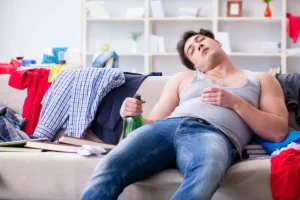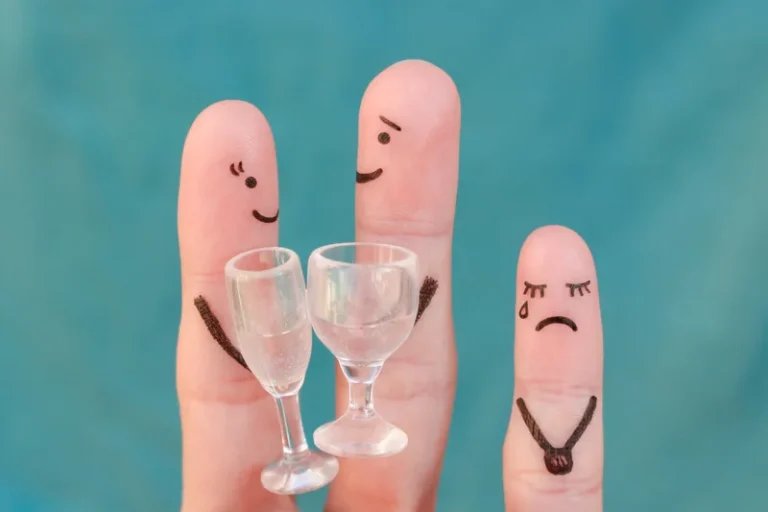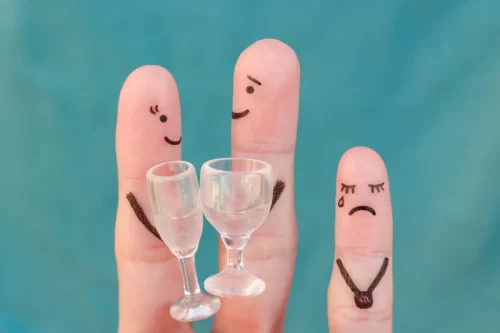What medications can help me stop drinking? Alcohol and Drug Foundation

Several medications that reduce norepinephrine-mediated arousal are reported to attenuate craving. Beta blockers (e.g., propranolol Inderal®) are a class of norepinephrine antagonists, many of which are prescribed to treat high blood pressure and symptoms of acute withdrawal symptoms (Gottlieb et al. 1994). A random, double-blind, placebo-controlled study (Gottlieb et al. 1994) also found beta blockers to be effective in reducing alcohol craving during withdrawal and early abstinence (to 1 year) as measured on a five-point scale. Alcoholics with high initial craving scores showed the greatest reduction, and completion of the program correlated with improvement in both the drug and the placebo groups. However, overall study completion rates were low; thus, no conclusions could be drawn about long-term relapse (Gottlieb marijuana addiction et al. 1994).
Do OTC Medications Help Alcohol Use Disorder?

Alcohol withdrawal symptoms typically last a few days – at most, a couple weeks – but the real challenge is the ongoing cravings. These happen less frequently the longer you’ve been sober, but when they occur, they can be incredibly powerful. Cravings are one of the leading causes a person relapses, fortunately there are medications for alcohol cravings that are FDA approved. The path to recovery can sometimes feel overwhelming, but you do not have to walk it alone. Medications like acamprosate, disulfiram and naltrexone can offer valuable support in reducing cravings, improving abstinence rates, and, in the case of disulfiram, providing a firm deterrent to relapse. Deciding on the best option depends on your personal goals, medical background and comfort with each medication’s unique approach.
Guest Editorial: A radical advance in the integration of co-occurring mental health care within the addiction system
Speak with a healthcare professional to explore which medication might align with your lifestyle and recovery needs. Disulfiram, sold under the brand name Antabuse®, is one of the oldest medications approved for alcohol use disorder. Unlike acamprosate, which helps regulate neurotransmitters to reduce cravings, disulfiram deters you from drinking by causing an intensely unpleasant reaction when alcohol is consumed. Baclofen (Lioresal) is a muscle relaxant and a GABA-B receptor agonist, not related to opioids or other typical alcohol treatments. It affects the GABA-B receptors in the brain, which helps reduce alcohol cravings and anxiety, making it easier to avoid drinking.
What is Medication-Assisted Treatment (MAT)?

Fifty mg/day is standard dose of naltrexone for clinical treatment of opioid dependence (Volpicelli et al. 1992). Symptoms of acute withdrawal (e.g., tremors, agitation, and seizures) may occur following cessation or reduction of heavy drinking. Craving is sometimes assessed by measuring certain physiological changes thought to accompany craving, such as changes in heart rate, reduce alcohol craving blood pressure, salivation, and sweat gland activity.

How to Stop Binge Drinking in 7 Steps

While counseling and support groups play a significant role in recovery, medications can also be an invaluable tool. In this article, we will explore three of the most commonly prescribed medications for AUD — acamprosate (Campral®), disulfiram (Antabuse®) and naltrexone (Vivitrol). We’ll also discuss how to decide if medication is right for you, and where to turn for additional resources and support. For many people trying to recover from a substance use disorder, perhaps for the majority, abstinence may be the most appropriate treatment objective. But complete abstinence is sometimes not achievable, even in the long-term, and there is a need for new treatment approaches that recognize the clinical value of reduced use. (HealthDay News) — Low-dose semaglutide seems to reduce craving and certain drinking outcomes in alcohol use disorder (AUD), according to a study published online Feb. 12 in JAMA Psychiatry.
- Anti-craving medications have emerged as a significant aid in this battle, providing hope for those aiming to maintain abstinence.
- However, Antabuse was the first drug approved back in the 1950s and it feels like it’s a product of its time.
- A significant difference between treatment effects was observed only after excluding the heaviest drinkers (Sellers et al. 1994).
How Does Naltrexone Work?
- Alcohol dependence refers to a condition where an individual’s body becomes reliant on alcohol to function normally.
- We’ll also discuss how to decide if medication is right for you, and where to turn for additional resources and support.
- For others, regular follow-up with their primary doctor should be enough and can work, Holt says.
- Randomized, placebo-controlled trial finds that low-dose semaglutide reduces amount of alcohol consumption, alcohol cravings, and heavy drinking days.
- Use of anticraving medications in combination (e.g., naltrexone plus acamprosate) may enhance their effectiveness.
However, no difference in either craving or drinking level was observed between the patients who had received ritanserin and the patients who had received the placebo. Disulfiram interferes with the metabolism of alcohol by the liver, permitting a toxic breakdown product of alcohol to accumulate in the bloodstream. Alcohol consumption following disulfiram treatment results in unpleasant symptoms, such as flushing, palpitations, difficulty breathing, headache, and nausea. Recent reviews of placebo-controlled clinical trials with disulfiram have failed to confirm the drug’s efficacy in alcoholism treatment (Hughes and Cook 1997). However, disulfiram has been shown to interfere with the metabolism of dopamine (Rogers et al. 1979), potentially influencing the development of craving. Clinical assessments also indicated that semaglutide (compared to placebo injections) reduced weekly alcohol craving, reduced average drinks on drinking days, and led to greater reductions in heavy drinking days, relative to placebo.